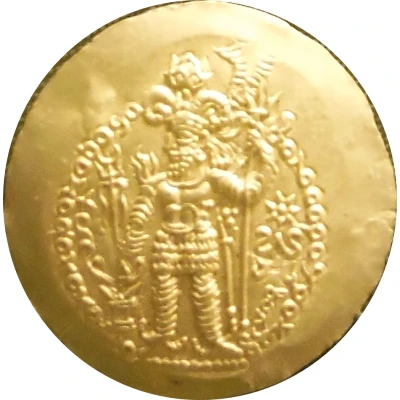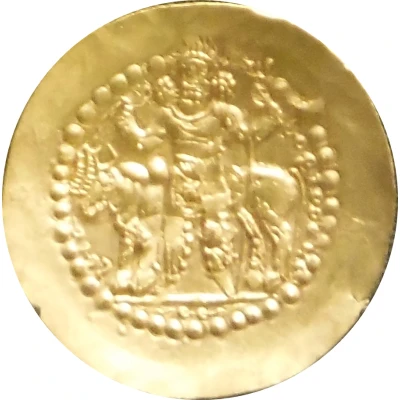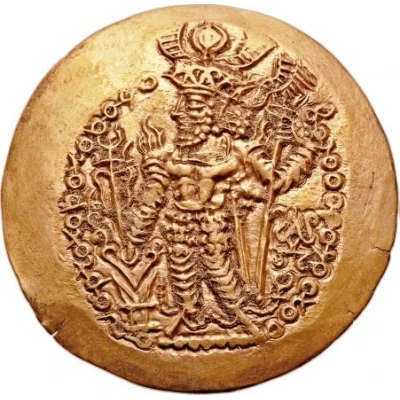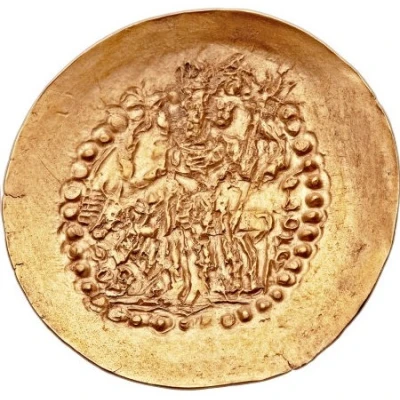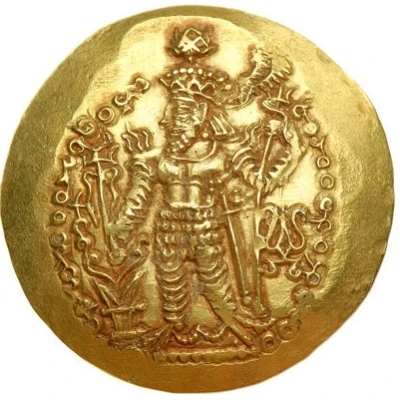
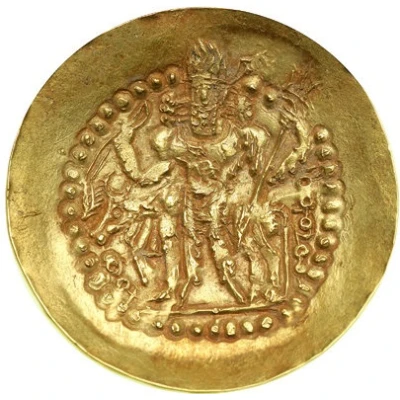

© Heritage Auctions
Dinar - Hormizd I
| Gold | 8.06 g | 32 mm |
| Issuer | Indo-Sasanian Kingdom (Sasanian Empire (224-651)) |
|---|---|
| Shah | Hormizd I (265-295) |
| Type | Circulating commemorative coin |
| Years | 273-275 |
| Value | 1 Dinar |
| Currency | Drachm (230 AD-360 AD) |
| Composition | Gold |
| Weight | 8.06 g |
| Diameter | 32 mm |
| Shape | Round (irregular) |
| Technique | Hammered |
| Orientation | Variable alignment ↺ |
| Demonetized | Yes |
| Updated | 2024-10-10 |
| Numista | N#72994 |
|---|---|
| Rarity index | 100% |
Reverse
Siva standing before bull Nandi; head of bull in full front view; God in Sasanian garment, with Sasanian diadem, trident in left, noose in right hand.
With base line.
Comment
The Indo-Sassanids, Kushano-Sassanids or Kushanshas (also Indo-Sassanians) were a branch of the Sassanid Persians who established their rule in the northwestern Indian subcontinent during the third and fourth centuries at the expense of the declining Kushans. They were in turn displaced in 410 by the invasions of the Huna people. They were able to re-establish some authority after the Sassanids destroyed the Hephthalites in 565, but their rule collapsed under Arab attacks in the mid 7th century.Interesting fact
One interesting fact about the Dinar - Hormizd I (273-275) coin is that it features an image of the king, Hormizd I, on one side and a fire altar on the other. The fire altar was an important symbol in Zoroastrianism, the dominant religion of the Sasanian Empire at the time. This coin is a rare example of a Sasanian coin that features both the king and a religious symbol, highlighting the importance of religion and kingship in Sasanian culture.
